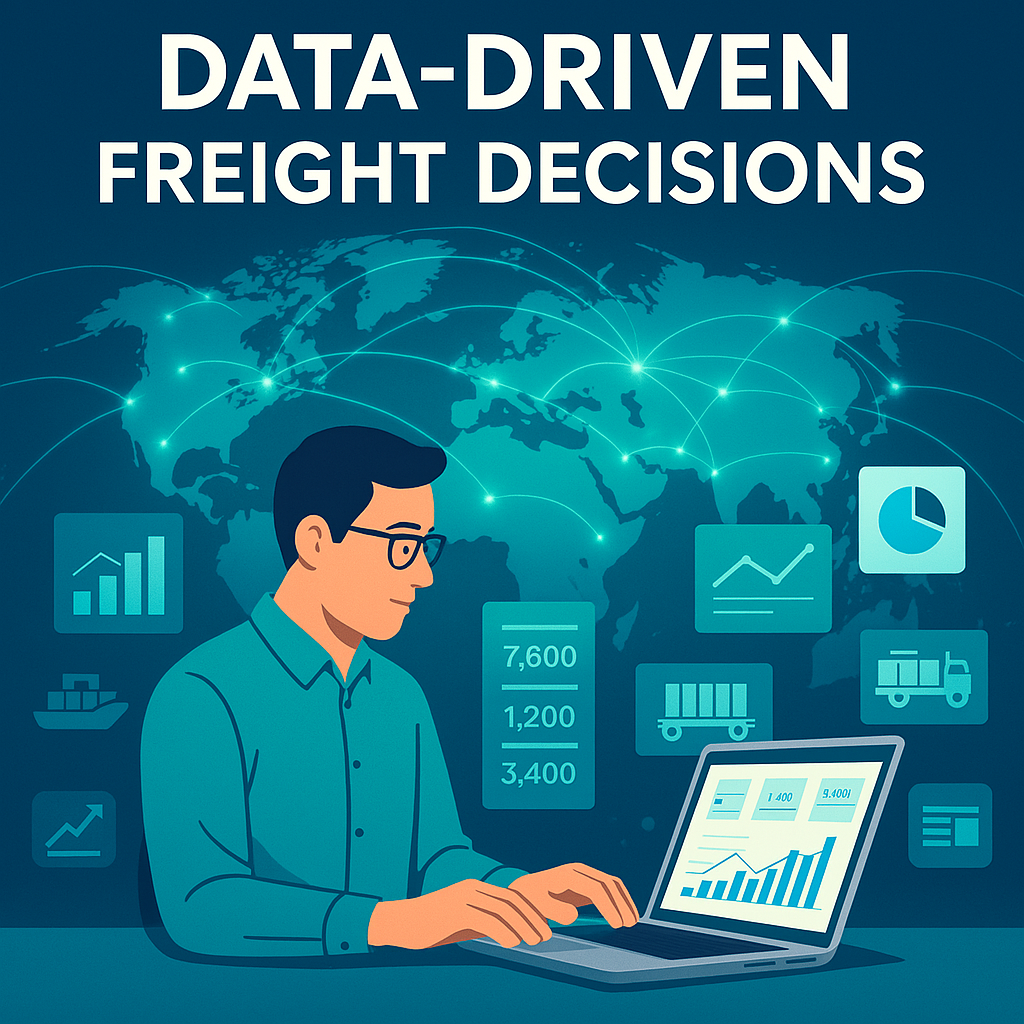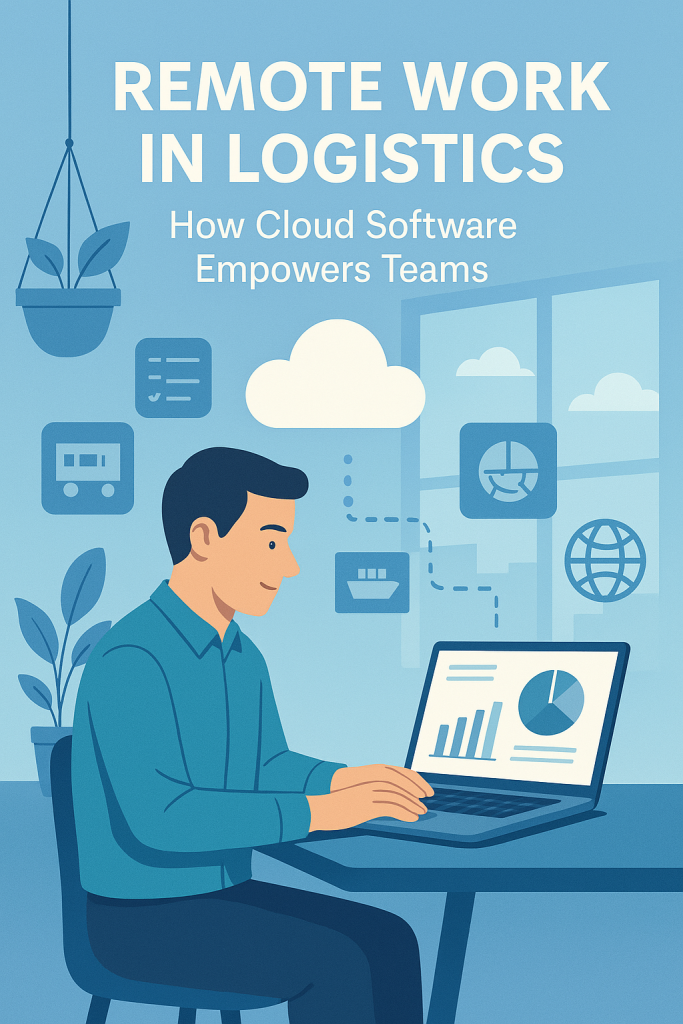Data-Driven Decision Making in Freight: Using BI & Analytics

📦 Why Data Matters in Freight Logistics
The logistics industry generates massive volumes of data daily:
- Shipment tracking updates
- Carrier performance metrics
- Customs clearance times
- Warehouse throughput
- Fuel costs and rate fluctuations
But data alone isn’t the solution. It’s how you analyze and act on that data that delivers value.
🔍 What Is Data-Driven Decision Making?
Data-driven decision-making (DDDM) is the process of making operational, strategic, or tactical decisions based on verified, analyzed, and actionable data — not hunches or legacy habits.
In logistics, this translates to:
- Selecting the most reliable carrier based on historical delivery data
- Rerouting cargo based on predictive traffic analytics
- Adjusting inventory levels based on demand forecasting
- Identifying bottlenecks through warehouse performance heatmaps

📈 Benefits of Using BI & Analytics in Freight
Business Intelligence platforms and analytics tools help convert raw data into meaningful logistics insights. Key benefits include:
✅ 1. Improved Operational Efficiency
Track KPIs like delivery time, dwell time, and asset utilization. Quickly identify inefficiencies and reduce delays.
✅ 2. Smarter Route Planning
Use real-time and historical traffic data to optimize routes and lower transportation costs.
✅ 3. Forecasting & Demand Planning
Use trend analysis to prepare for peak seasons or predict inventory needs.
✅ 4. Vendor & Carrier Performance Evaluation
Rate carriers based on speed, accuracy, and damage claims — then make smarter contract decisions.
✅ 5. Proactive Risk Management
Detect potential disruptions early through predictive alerts (e.g., port congestion or weather delays).
🧠 Examples of Data-Driven Use Cases
Use Case | BI/Analytics Benefit |
Late deliveries tracking | Dashboard highlighting carrier delays |
Inventory stockouts | Heatmaps showing demand spikes |
Customs clearance optimization | Avg. clearance time by port/country |
Fuel cost analysis | Trend visualization with external benchmarks |

🛠️ Features to Look For in BI-Enabled Logistics Platforms
If you’re evaluating freight software with strong analytics features, make sure it includes:
- Custom dashboards and report builders
- Drill-down capabilities on shipments, invoices, and KPIs
- Alerts and automation triggers for anomalies
- Data integration tools to connect with TMS, WMS, CRM, etc.
- Mobile accessibility to monitor metrics on the go
➡️ Modern logistics platforms like Linbis include these features to help teams visualize and act on data in real time.
🌍 Why This Matters Globally
For global freight and logistics operations, the stakes are higher:
- Cross-border complexities add risk and delay
- Multiple carriers and languages complicate communication
- Geopolitical and economic events affect supply chains unpredictably
With BI tools, logistics managers gain a centralized, multilingual, multi-currency view — essential for global trade efficiency.

🚀 Final Thoughts: Make Freight Decisions with Confidence
In logistics, time is money — and data is power. By embedding analytics into your freight workflows, you can:
- Cut costs
- Predict issues
- Improve customer satisfaction
- Scale operations with confidence
If your logistics stack isn’t data-driven yet, now’s the time to evolve.
📌 Ready to see how BI transforms your freight decisions?
Stay tuned for our deep dive into freight analytics dashboards, or explore how cloud platforms are streamlining remote logistics teams.
